
The national flag of the Netherlands is a horizontal tricolour of red, white, and blue. The current design originates as a variant of the late 16th century orange-white-blue Prinsenvlag, evolving in the early 17th century as the red-white-blue Statenvlag, the naval flag of the States-General of the Dutch Republic, making the Dutch flag the oldest tricolour flag in continuous use. As a flag that symbolises the transformation from monarchy to republic, it has inspired both the derivative Russian flag, and after the French Revolution in 1789, the vertically striped French tricolour; both flags in turn influenced many other tricolours. During the economic crisis of the 1930s, the old Prince's Flag with the colour orange gained some popularity among some people. To end the confusion, the colours red, white and blue and its official status as the national flag of the Kingdom of the Netherlands were reaffirmed by royal decree on 19 February 1937.

Derbyshire is a ceremonial county in the East Midlands of England. It borders Greater Manchester, West Yorkshire, and South Yorkshire to the north, Nottinghamshire to the east, Leicestershire to the south-east, Staffordshire to the south and west, and Cheshire to the west. Derby is the largest settlement, and Matlock is the county town.

The national flag of Malaysia, also known as the Stripes of Glory, is composed of a field of 14 alternating red and white stripes along the fly and a blue canton bearing a crescent and a 14-point star known as the Bintang Persekutuan. The 14 stripes, of equal width, represent the equal status in the federation of the 13 member states and the federal territories, while the 14 points of the star represent the unity among these entities. The crescent represents Islam, the country's state religion; the blue canton symbolises the unity of the Malaysian people; the yellow of the star and crescent is the royal colour of the Malay rulers. It is in the stars and stripes family of flags.

The national flag of Armenia, also known as the tricolour, consists of three horizontal bands of equal width, red on the top, blue in the middle, and orange on the bottom. The Armenian Supreme Soviet adopted the current flag on 24 August 1990. On 15 June 2006, the Law on the National Flag of Armenia, governing its usage, was passed by the National Assembly of Armenia.

The national flag of Lithuania consists of a horizontal tricolour of yellow, green, and red. It was adopted on 25 April 1918 during Lithuania's first period of independence from 1918 to 1940, which ceased with the occupation first by the Soviet Union, and then by Nazi Germany (1941–1944). During the post-World War II Soviet occupation, from 1945 until 1988, the Soviet Lithuanian flag consisted first of a generic red Soviet flag with the name of the republic, in 1953 that was changed to the red flag with white and green bands at the bottom.

The national flag of Zimbabwe consists of seven even horizontal stripes of green, gold, red and black with a white triangle containing a red five-pointed star with a Zimbabwe Bird. The present design was adopted on 18 April 1980. The soapstone bird featured on the flag represents a statuette of a bird found at the ruins of Great Zimbabwe. The bird symbolises the history of Zimbabwe; the red star beneath it officially stands for the nation's aspirations but is commonly thought to symbolise socialism, and the revolutionary struggle for freedom and peace. The design is based on the flag of Zimbabwe's ruling party, the Zimbabwe African National Union – Patriotic Front.

The flag of Saint Lucia consists of a cerulean blue field charged with a golden triangle in front of a white-edged black isosceles triangle. Adopted in 1967 to replace the British Blue Ensign defaced with the arms of the colony, it has been the flag of Saint Lucia since the country became an associated state of the United Kingdom that year. Although the overall design of the flag has remained unchanged, specific aspects of it have been altered over the years.

The current flag of Sudan was adopted on 20 May 1970 and consists of a horizontal red-white-black tricolour with a green triangle at the hoist. The flag is based on the Arab Liberation Flag of the Egyptian Revolution of 1952, as are the flags of Egypt, Iraq, Syria, Yemen, and Palestine and formerly of the United Arab Republic, North Yemen, South Yemen, and the Libyan Arab Republic.
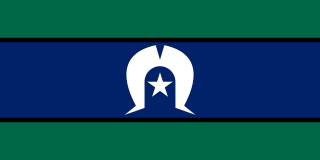
The Torres Strait Islander flag is the official flag of the Torres Strait Islanders, an Indigenous people of Australia. It was designed in 1992 by Bernard Namok, winning a local competition held by the Islands Coordinating Council, and was recognised by the Aboriginal and Torres Strait Islander Commission in June 1992. It was granted official status in 1995 under the Flags Act 1953 along with the Australian Aboriginal flag.
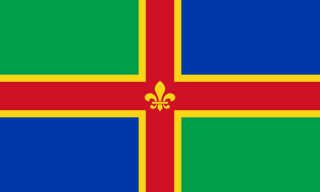
The official flag of Lincolnshire was unveiled at five separate ceremonies across the county on 24 October 2005. The flag was chosen in a popular vote organised by BBC Radio Lincolnshire along with Lincolnshire Life magazine. The winning entry, designed by Lincolnshire-born Michelle Andrews, a web producer at BBC Lincolnshire, was selected from a shortlist of six designs and attracted thousands of votes.
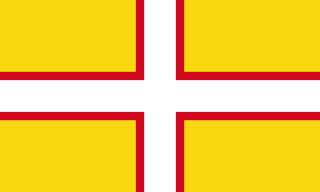
The flag of Dorset is the flag of the English county of Dorset. It was chosen as the flag of Dorset on 16 September 2008 following a vote open to all Dorset residents, and organised by Dorset County Council. The unitary authorities of Bournemouth and Poole declined an invitation to participate. The flag has subsequently been registered at the Flag Institute and added to their UK Flags Register.

The Flag of Berkshire is the flag of the historic county of Berkshire in England. The flag was registered with the Flag Institute as the flag of the county in March 2017. The flag was adopted after the design was submitted by a number of county-based bodies as well as the Lord Lieutenant of the county. Prior to adoption, a banner of the arms of the former Berkshire County Council had been occasionally used to represent the county.

The flag of Pembrokeshire is the flag of the Welsh county of Pembrokeshire.

The flag of Nottinghamshire was registered with the Flag Institute in 2011. The flag includes a white-fimbriated red St George's Cross on a green background, and a green silhouette of James Woodford's bronze statue of Robin Hood on a white shield located close to Nottingham Castle.
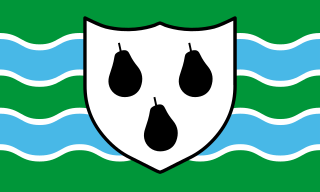
The Worcestershire flag is the flag of the county of Worcestershire. It was registered with the Flag Institute on 8 April 2013 as the winning entry of a BBC Hereford & Worcester competition. It was first flown in a ceremony at Worcester Cathedral on the same day.

The Flag of County Durham is the flag of the historic county of Durham. It was registered with the Flag Institute as the flag of the county in 2013, after winning an online competition to decide a flag for the county.

The East Lothian flag is the flag of the Scottish county of East Lothian (Haddingtonshire). It was registered with the Flag Institute on 13 December 2018 following its announcement at a reception hosted by the Lord Provost.

The Aberdeenshire flag is the flag of the traditional Scottish county of Aberdeenshire. It was registered with the Flag Institute on 22 April 2023.

The Banffshire flag is the flag of the county of Banff, registered with the Flag Institute on 28 October 2023.
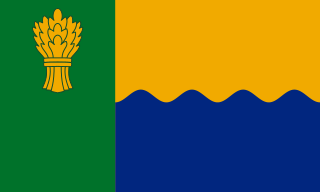
The Moray flag is the flag of the county of Moray, registered with the Flag Institute on 28 October 2023.























